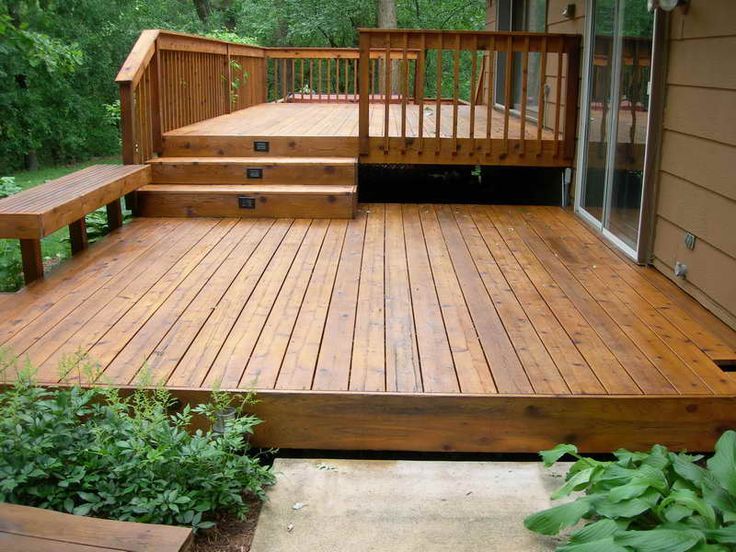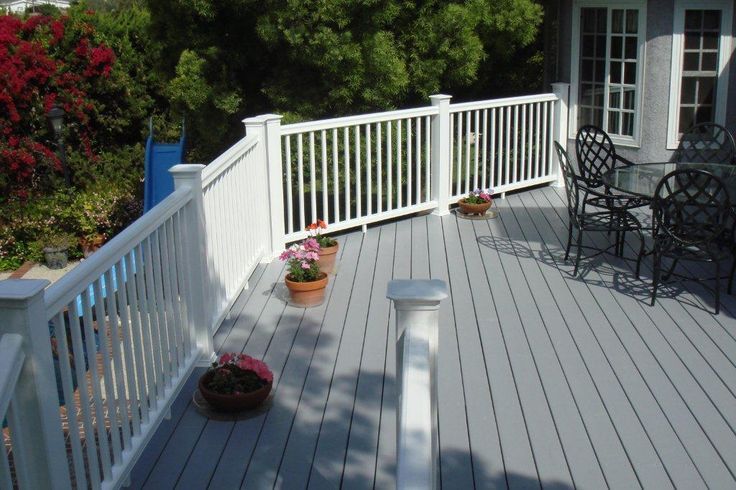Deck Maintenance
Maintaining Your Deck Year Round
Wood should be periodically cleaned to remove fallen leaves, dirt and other debris from its surfaces. There are a variety of methods for cleaning your deck and products you can buy for this purpose.
Preparation and cleaning
Once a deck is a couple years old, the elements begin to take their toll on the surface. Cleaning is key to a quality restaining and finishing project. Using detergent or bleach as a means of cleaning has been replaced by new products that clean more thoroughly without bleaching the wood or raising the grain. 
Be especially careful to remove debris that collects between boards. There are special tools available for this. But, regardless of the tool used, the important thing is that the dirt is removed. Fallen leaves can stain a deck and collect moisture leading to mold and mildew problems. The deck should be regularly swept to remove them.
One of the major reasons decks need to be replaced is dry rot. Dry rot is a fungus that feeds on wood, leading to its rapid deterioration. Once dry rot has established itself, it often leads to further infestation of the wood by termites. The combination can quickly destroy a deck, and also provides a pathway into the wooden structures of the rest of your home.
Since dry rot requires wet wood to feed on, this problem can be avoided by sealing wood off from moisture. It’s also important to keep the deck free from debris and dirt build-up between boards where moisture collects and dry rot can start.
In general, it’s a good idea to treat your deck the same as you would any other flooring surface in your home. Cleaning and inspecting it regularly will greatly minimize the need for major repairs.
Other tips for keeping your deck clean include using a stain remover to remove stains, sanding splinters down, and using pot feet for planters so that they don´t stain the deck. For decks built close to the ground it’s a good idea to spread a polyethylene barrier over the soil, and then cover this with decorative rock. This will help to keep moisture from seeping in from underneath the deck.
Seal to protect against water and UV rays
If your deck is newly built, it should be allowed to weather for one year before a sealant is added. This ensures that the wood can dry out and the fibers can 
When applying protective sealant, it’s important to prepare the deck first. Clean the deck to remove dirt, debris and dry rot. Then, remove any old paint or sealant and sand the wood to remove rough spots and splinters. The most important part of re-sealing your deck is to start with a fresh surface of exposed wood that is able to absorb the new sealant. The deck should be completely dry before sealant is applied: wait a minimum of 2-3 days after cleaning to allow for this. If the wood is not dry, the sealant will not absorb properly. Read and follow the instructions on the product label carefully when applying sealant. Be sure you choose a product that will serve your needs. For advice pertaining to your personal situation, check with a knowledgeable sales person at a quality paint store.
A clear sealant lets the natural beauty of the wood show through, but won´t provide the same UV protection as a pigmented finish. For this reason, a clear sealant needs to be reapplied every 12 to 18 months, while a pigmented one can last for up to three years. The sealant should protect your wood against both moisture and sun damage.
Painting
Paint can also be applied to your deck, but will not provide the same degree of protection as a wood sealant. If paint is used it’s best to use it for only the 
Environmental costs of poor deck maintenance
In addition to a financial cost to the homeowner, there is also an environmental cost of poor deck maintenance. Each year about 3 million new decks are built in the United States. Every year an additional 3 million decks are replaced or repaired due largely to poor maintenance. This wasteful use of lumber contributes to the depletion of our nation’s forests, and the unnecessary loss of an important ecological resource. The average acre of forest yields only enough wood for two or three decks to be replaced each year. But, with a little maintenance and care, the average deck can easily last several decades. If all decks in the U.S. were cared for properly, it would save over 6 million trees from being cut in one ten year span.




